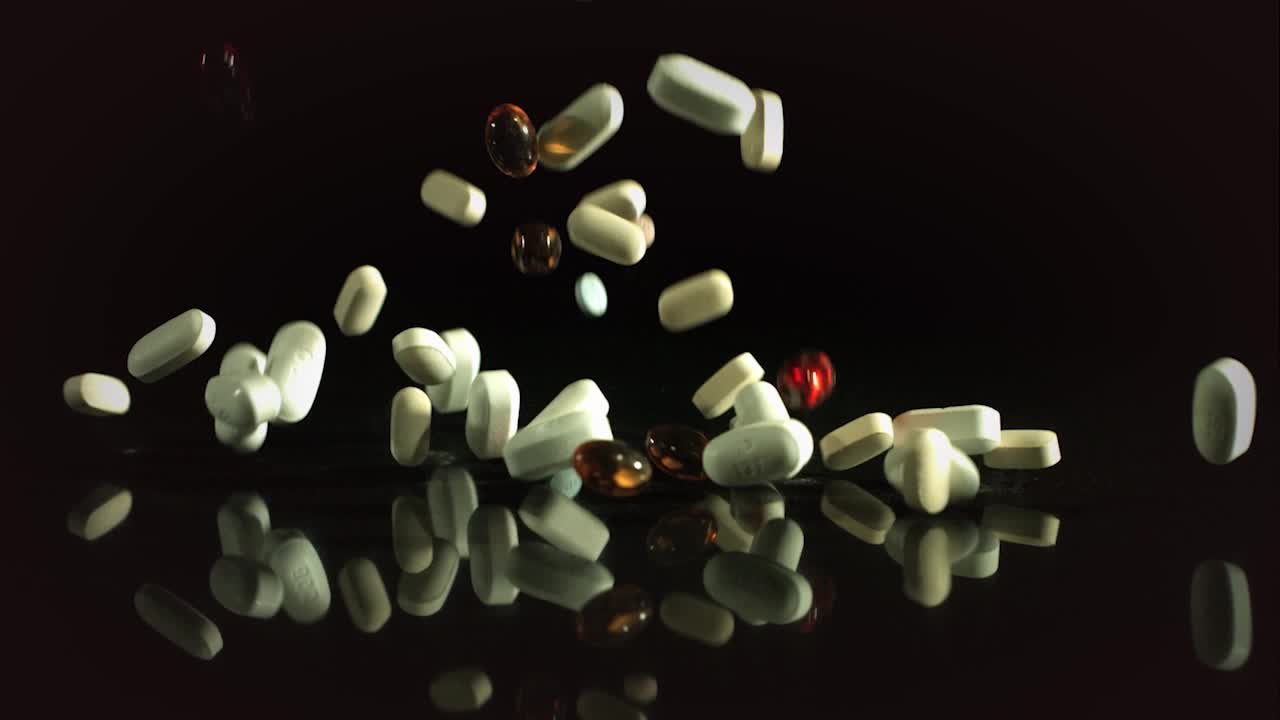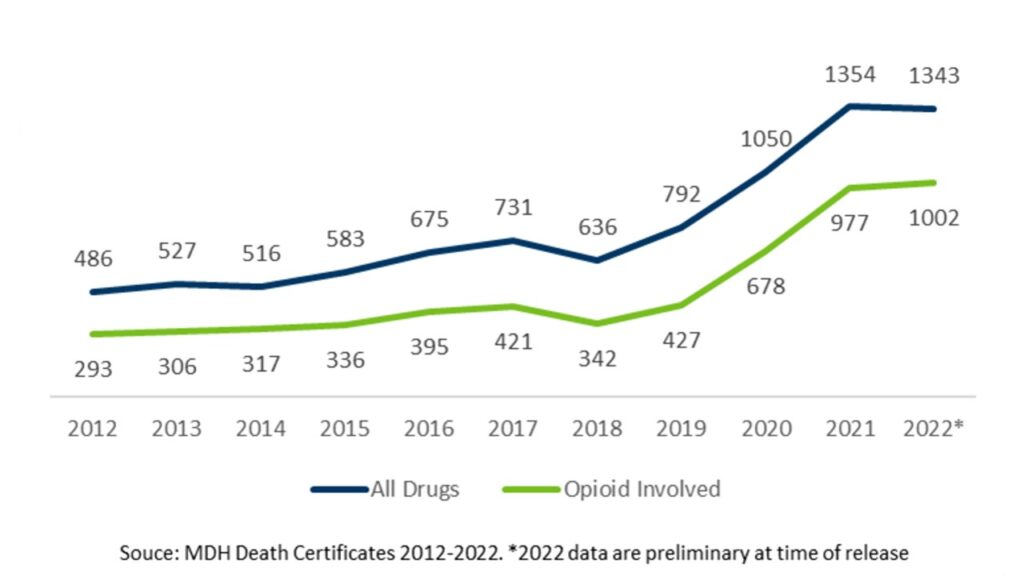Drug overdose deaths in Minnesota drop slightly for first time since 2018, MDH report shows

(FILE)
After a sharp rise in drug overdose deaths over the past couple of years, 2022 halted that trend, although much work remains to combat the crisis.
However, preliminary data released by the Minnesota Department of Health (MDH) on Thursday indicated that opioid overdose deaths held steady while all drug overdose deaths actually dropped slightly last year in the state for the first time since 2018.
The number of opioid-involved overdose deaths in Minnesota has consistently risen for many years, albeit at a pretty slow rate until 2020. After opioid overdose deaths dipped from 421 in 2017 to 342 in 2018, Minnesota saw numbers start to spike, rising to 427 in 2019, 678 in 2020 and 978 in 2021. Last year, 1,002 Minnesotans died from opioid overdoses, according to MDH’s preliminary data — still up from the prior year but not nearly as big of an increase as the state has seen in recent years.
The spike in opioid-involved overdose deaths has mirrored all drug overdose numbers in the state, as total overdose deaths in Minnesota dropped from 731 in 2017 to 636 in 2018 before jumping to 792, 1,050 and 1,254 in the following three years. Last year, MDH says 1,343 drug overdose deaths were recorded in preliminary data, marking only the third decrease in the past decade and the first since 2018. Broken down further, the seven-county metro area saw a very small increase from 2021 while Greater Minnesota experienced a modest drop.

While it’s at least somewhat encouraging that the drastic rise in opioid deaths was halted last year, it still shows a massive issue that isn’t yet getting any better.
MDH says fentanyl is now involved in 92% of all opioid overdose deaths and 62% of all overdose deaths in Minnesota.
“We are responding to the more deadly threat of fentanyl with several new tools for saving lives that were passed by the Legislature in 2023, such as expanding the availability of naloxone, and covering the costs of having it on hand, in school buildings, treatment programs, and during emergency and law enforcement calls,” MDH Commissioner Dr. Brooke Cunningham said in a prepared statement.
Local officials in Hennepin County highlighted fentanyl’s impact last month and the Minnesota Bureau of Criminal Apprehension also recently unveiled a new public overdoses and drug crimes dashboard.
While the focus on combatting the crisis hasn’t yet reversed the troubling overdose death trend, MDH says some progress is being made.
Last year, deaths involving prescribed opioids, heroin and methadone decreased, with heroin deaths dropping to a 10-year low. Non-fatal overdoses also dropped 5% from 2021 to 2022, although nearly 17,000 overdoses were still reported, according to the preliminary data.
Meanwhile, cocaine and psychostimulants like meth still contribute to many drug overdose deaths across the state, with cocaine-involved deaths seeing the largest increase of any drug category last year, up 27%.
MDH’s report notes that Minnesota’s data is right in line with national trends, and the state’s numbers may increase slightly as preliminary data is finalized.
More funding and resources, both at a state level and locally, are also being directed to address substance abuse but the task isn’t a small one.
To read MDH’s full preliminary report, click here.
There are several resources available to help anyone struggling with substance abuse. Help is available through the Substance Abuse and Mental Health Services Administration by calling 1-800-662-4357, and MDH has additional help online.